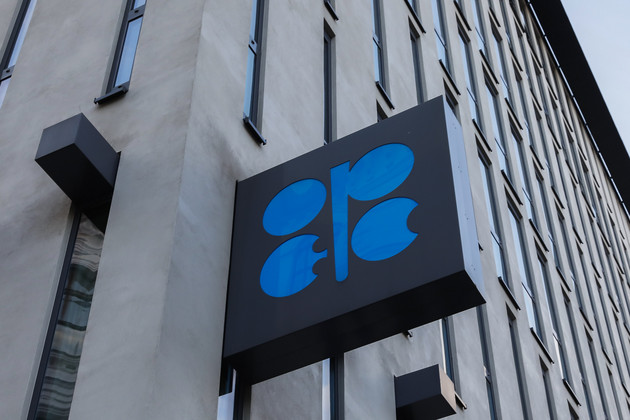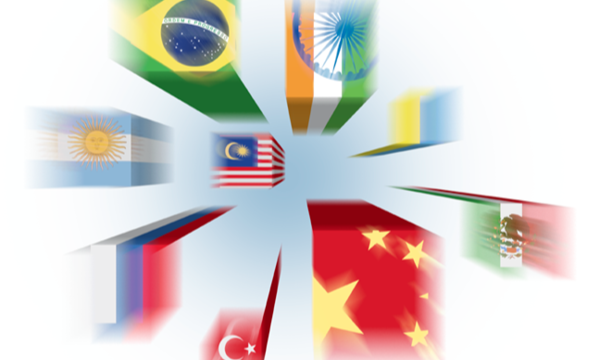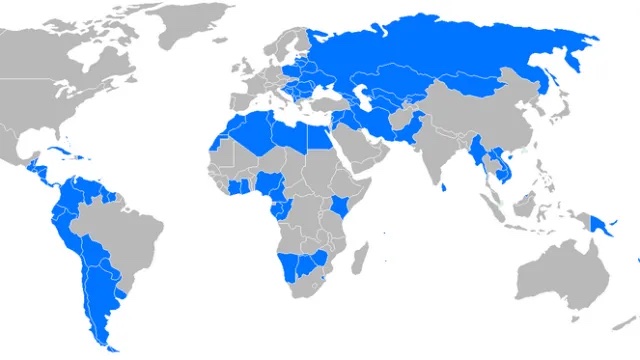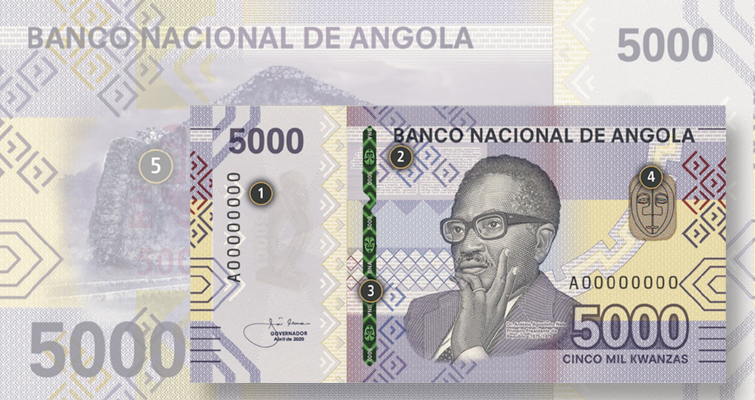“Storm clouds are brewing for the global economy”
That is the dire assessment of the World Bank in its 2019 Global Economic Prospects report, which includes a warning about the growing risks to emerging market economies from fractured global trade, geopolitics, oil prices, and rising borrowing costs.
The World Bank cut its forecast for global economic growth, as slowing growth in trade and investment – as well as tighter financial market conditions due to rising interest rates – is expected to dampen momentum. It now projects a global expansion of 2.9 percent this year, down from 3 percent in 2018, a reduction of 0.1 percentage points from its June forecast.
The World Bank’s concerns are echoed in the minutes from the December meeting of the Federal Open Market Committee (FOMC) – the US Federal Reserve’s policymaking body. Fed officials at the gathering noted the possibilities of “a sharper-than-expected slowdown in global economic growth,” an escalation in trade tensions, and a further tightening of financial conditions as prominent risks to their economic outlook.
After raising its target federal funds rate last month, the Fed signaled a switch to a more data-dependent approach to monetary policy, a move, which could mean fewer rate hikes this year if the predictions of a global slowdown turn out to be accurate.
MENA: Escalation Of Iran-US Tensions Could Trigger ‘Adverse Spillovers’
Focusing on the Middle East and North Africa (MENA), the World Bank sees economic activity in the region growing by 1.9 percent in 2019, not much of an improvement over the 1.7 percent GDP growth witnessed in 2018. This projection, however, (as well as the medium-term outlook for the region) is heavily reliant on the hope that there isn’t a “significant escalation of geopolitical conflicts.”
US President Donald Trump has made no secret of his desire to withdraw American troops from prolonged engagements in Afghanistan, Iraq, and Syria – a move many analysts believe will ramp up tensions in the region. Despite increased attention from the global community, the proxy war in Yemen between Iran and Saudi Arabia continues. Turkey might invade Syria to attack Kurdish forces they have labeled as terrorist groups, and the United States will continue to tighten the screws on Iran – who it views as the primary threat to peace and stability in the region.
So it is no surprise the World Bank believes risks to the MENA outlook are tilted to the downside, given the potential for an escalation of military conflicts to cause even greater harm to economic activity. In particular, the agency said, “a substantial further escalation” of US-Iran tensions could spell bad news for the rest of the region.
These geopolitical concerns, and the uncertain impact on oil production, as a result, could trigger even more volatility in oil prices – complicating or stalling the important progress made to-date in both oil-exporting and importing nations.
There is also the matter of tighter credit conditions. As noted in a previous article, central banks of the countries that make up the Gulf Cooperation Council (GCC) – Bahrain, Kuwait, Oman, Qatar, Saudi Arabia, and the United Arab Emirates – have to raise interest rates in tandem with the Fed due to their fixed exchange rate regimes.
“A more abrupt tightening of advanced-economy monetary policy could weigh on capital flows to the region and dampen foreign investor confidence in large GCC economies,” the World Bank warned, adding that, “High external debt denominated in foreign currency in some oil importers implies that they are also vulnerable to unexpected sharp appreciation of the U.S. dollar.”
Sub-Sahara Africa: ‘Domestic Risks Remain Elevated’
Switching focus to expectations for the Sub-Saharan Africa region in 2019, faster growth is forecast (3.4 percent vs. 2.7 percent estimated for 2018), but with risks also skewed towards the downside – a sudden spike in borrowing costs, escalating trade tensions between major economies, and a sharp drop in commodity prices due to weak global demand. Then there is the knock-on effect these factors could have in compounding domestic concerns such as political uncertainty, fragile fiscal positions, and adverse weather conditions. 
The direction of oil prices will also be central to the budgets of major oil exporters Angola and Nigeria this year, and it remains to be seen if OPEC’s decision to remove 1.2 million barrels per day from the oil market will boost prices in this weak demand environment.
In terms of trade, data released so far in 2019 indicate an economic slowdown is underway in China, a point bolstered by the People’s Bank of China’s decision to again cut the Reserve Ratio Requirement for banks in an effort to spur more lending. All signs also point to a slowdown in the Euro Area, as both economies feel the bite from protectionist trade policies initiated by the United States.
The World Bank warned that slower growth in China and the Eurozone, given their strong trade and investment ties to Sub-Saharan Africa, would adversely affect the region through lower export demand and investment. This risk is exacerbated by the fact many state-supported entities have taken out massive loans that are backed by commodity exports, increasing the odds that a negative commodity price shock could have a devastating ripple effect.
The report also said a faster-than-expected normalization of monetary policy in advanced economies could lead to sharp reductions in capital inflows (as investors flock to safe-haven assets), higher financing costs, and damaging currency depreciation. The significant drop in foreign exchange values that accompany capital flight would also make it even more challenging for many of these countries to service their foreign currency-denominated debt, something that is “already a rising concern in the region,” the World Bank added.
South Africa’s economy already took a beating last year, as economic activity contracted and the value of the rand was dragged down by a combination of weaker economic fundamentals and political upheaval. While political stability has improved under the leadership of Cyril Ramaphosa, the May general elections scheduled for the middle of this year remain a big ‘X’ factor. The elections will be held to pick a new National Assembly and new provincial legislatures in each province. It will also determine who will become the next President of South Africa, with Ramaphosa bidding for a full term as president while also seeking to protect the African National Congress’ majority in the National Assembly.
Nigeria’s general election takes place on February 16, an event that could be a source of unrest and spark a new wave of ethnic violence.
As a result, “domestic risks, in particular, remain elevated,” the World Bank said, and “political uncertainty and a concurrent weakening of economic reforms could continue to weigh on the economic outlook in many countries.”
For those countries with elections scheduled in 2019, including the aforementioned regional giants, the World Bank is concerned that domestic political considerations could derail efforts to instill greater fiscal discipline or implement much-needed structural reforms, especially where public debt levels are high and continue to soar.
US Federal Reserve: Lending A Helping Hand
The deterioration in economic conditions will be a constant risk in 2019, and emerging market economies could witness large outflows of foreign capital if the Federal Reserve continues to raise rates – constraining financing and growth.
However, it is possible the threats posed by a stronger US dollar and higher refinancing costs might not materialize for MENA and Sub-Saharan African economies, especially if the Fed stays committed to a more cautious monetary policy approach this year. According to the December FOMC minutes, many senior Fed officials believe that in the current low inflation environment, the US central bank “could afford to be patient” about further interest rate increases.
On the other hand, should upside factors such as tighter labor market conditions or possible risks to financial stability become more prominent, Fed officials’ policy outlook would change and emerging market economies will be in for a very bumpy ride.








